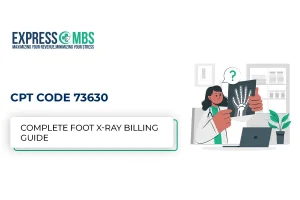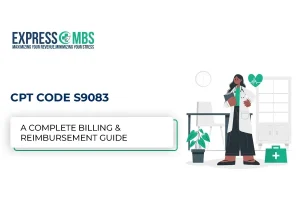
CPT Code 20550 – Complete Guide to Trigger Point Injection Billing, Modifiers & ICD-10 Coding

Correct coding for injection procedures can mean the difference between fast reimbursement and costly denials.
One of the most commonly used codes in musculoskeletal procedures is CPT code 20550.
This guide explains what CPT 20550 covers and which ICD-10 codes support it. How to bill it correctly to maintain compliance and maximize reimbursement.
What is CPT Code 20550?
This code should be used only when the injection is into the tendon sheath or ligament, not the tendon’s origin or insertion.
Documentation should clearly state:
- The site of injection
- The substance injected
- The indication or diagnosis
- Whether ultrasound guidance was used (reported separately if performed)
When to Use CPT 20550
This code should be used only when the injection is into the tendon sheath or ligament, not the tendon’s origin or insertion.
Documentation should clearly state:
- The site of injection
- The substance injected
- The indication or diagnosis
- Whether ultrasound guidance was used (reported separately if performed)
Common ICD-10 Codes Supporting CPT 20550
These ICD-10 codes often justify the medical necessity for this procedure:
- M65.30 – Trigger finger, unspecified finger
- M65.4 – Radial styled tenosynovitis (De Quatrain’s disease)
- M65.80 – Other synovitis and tenosynovitis
- M77.8 – Other enthesopathy
- M72.2 – Plantar Fascial fibromatosis
Accurate diagnosis coding ensures proper claim approval and reduces payer denials.
CPT 20550 vs. CPT 20551 - What’s the Difference?
Code | Description | Key Anatomical Difference |
20550 | Injection into tendon sheath or ligament | Used for trigger finger, tendinitis |
20551 | Injection into tendon origin or insertion | Used for epicondylitis or tendon insertion pain |
Tip:
When documentation shows the injection is at the origin or insertion of the tendon, use 20551, not 20550.
Misuse of these codes can lead to payer denials or compliance risks.
Modifiers for CPT 20550
Modifiers clarify billing situations when multiple procedures are performed.
Common modifiers used with 20550 include:
- Modifier 59: Distinct procedural service. Use when multiple injections are done at different sites during the same session.
- RT / LT: Identify right or left side.
- Modifier 50: For bilateral procedures.
Avoid misuse:
Never use modifier 59 automatically only when documentation clearly supports a separate and distinct site.
ICD-10 Coding Tips for CPT 20550
To support medical necessity:
- Use specific, localized ICD-10 codes when available (e.g., M65.311 for trigger finger, right index finger).
- Ensure laterality (right, left, unspecified) is properly documented.
- Match diagnosis to the exact procedure performed.
Example:
CPT 20550 + ICD-10 M65.331 (Trigger finger, right middle finger)
CPT J3301 (Ken log 10 mg) for medication billing
Common Billing Denials and How to Prevent Them
Frequent denial reasons:
- Missing or unspecific ICD-10 diagnosis
- Documentation doesn’t support procedure location
- Incorrect modifier usage
- Missing NDC or drug detail when billing with J3301
Prevention tips:
- Always verify payer-specific LCD/NCD coverage policies.
- Include exact anatomic site and drug information.
- Conduct internal coding audits to catch mismatches early.
Best Practices for Medical Billing Services
For billing companies handling musculoskeletal injections:
- Review documentation before claim submission.
- Cross-check CPT 20550 with related J-codes (e.g., J3301, J0702).
- Train coders on the anatomical differences between 20550 and 20551.
- Audit claims regularly to ensure modifier accuracy.
Outsourcing these tasks to a professional medical billing company helps reduce claim errors, improve first-pass rates, and ensure compliance with payer guidelines.
Final Thoughts
Accurate use of CPT 20550 is vital for both compliance and reimbursement.
Proper coding, ICD-10 alignment, and modifier use prevent denials and ensure providers get paid promptly.
Partnering with an experienced medical billing services company can streamline claims, maintain compliance, and boost revenue performance.
Frequently Asked Questions (FAQs)
Common diagnoses include trigger finger (M65.3-), tendinitis, and plantar fasciitis (M72.2).
Only if injections were done at distinct anatomical sites, supported by documentation, and modifier 59 is applied.
Use it to identify separate anatomical injections performed on the same day.
As medically necessary ensure documentation supports repeated injections.
Yes, with CPT 76942, if performed and documented



